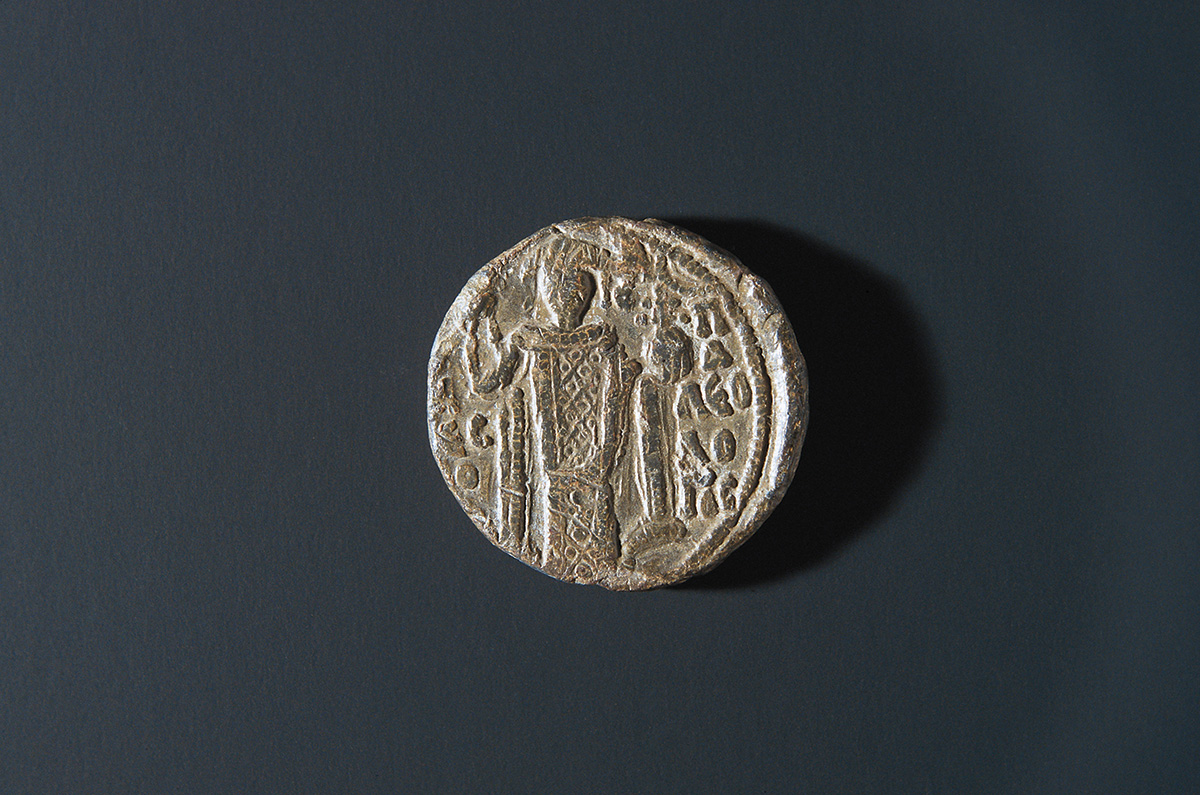This website uses cookies so that we can provide you with the best user experience possible. Cookie information is stored in your browser and performs functions such as recognising you when you return to our website and helping our team to understand which sections of the website you find most interesting and useful.
Seals – Lead Seals
The molyvdoboula or bullae are lead seals used by the Byzantines ensuring confidentiality in their correspondence. They comprise valuable primary historical sources, as they contribute to the study of the administrative system of the Byzantine Empire and the church hierarchy.
The collection of the Museum of Byzantine Culture, small but significant, regards archaeological finds from Thessaloniki, Pieria and Rentina, purchases from the former Zacos collection and donations from the Tsolozidis collection, the Economopoulos collection and by Demetrios Portolos. It numbers 100 seals, most of which are exhibited in two galleries; “From Iconoclasm to the splendour of the Macedonian and Komneni” and “The twilight of Byzantium.”
The categories included in the museum’s collection are seals of emperors, patriarchs and church dignitaries, government and military officials, members of the aristocracy, private people and even anonymous ones. Imperial seals retain a special place in the collection. The seal of Tiberius II (698-705) (Fig. 1) and that of Constantine VII (913-959) are exquisite samples of the imperial prosopography. Another important group of the collection is the patriarchal seals. The seals of the Patriarch Photios (858-886) (Fig. 2) and Michael Keroularios (1043-1059) stand out. The church officials, the senior and junior clergy, are represented by a significant number of seals found in the upper floor of the church of Hagia Sophia in Thessaloniki during the restoration works carried out after the earthquake of 1978, giving valuable information for the church of Thessaloniki. The private seals that belong to members of aristocratic families stand out for their large size and their good quality. A significant seal of Isaakios Komninodoukas (1180) (Fig. 3) was unearthed in the castle of Platamonas, while a seal of Alexios Komnenos Palaeologos was found in Pydna, Pieria. An important part of the collection regard seals belonging to officials involved in the public and military imperial administration, such as katepano, generals, magister, dukes, as well as officials of the personal guard of the emperor, like spatharioi, protospatharioi and spatharokandidatoi.












